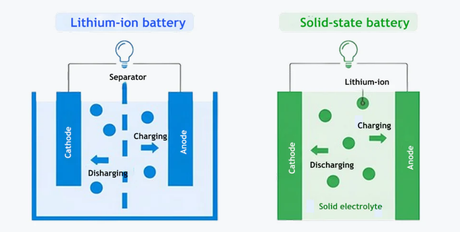A Comprehensive Guide on Solar Panel Size
Australians are marching toward a sustainable future and learning how to live off the grid, with many switching to solar power systems. If you're also considering going solar, you're probably wondering how to size solar panels.
In this blog, you'll learn the standard size of solar panels for your home. You will also find out the size and weight of solar panels for campers and how to determine your ideal solar panel size.
Modern Australians Are All About the Solar Energy
The year 2021 was a record-breaking one for rooftop solar power in Australia. Clean Energy Regulator (CER) data estimates that 3.04 million homes and companies installed a PV system, adding 2.88 gigawatts to the grid.
Moreover, CER's data show 4.5% more solar power installations and an 8.6% rise in solar power capacity.
Monthly installations and average system size July 2013 – December 2021

Standard Solar Panel Dimensions
The Australian solar panel market offers standard solar panel sizes. However, the dimensions depend on the manufacturer and the output they provide. The output typically does not influence the size of a solar panel.
The size of one solar panel is typically 1.7m x 1.0m. However, the material, the number of panel cells, and the manufacturer determine the standard solar panel size.
Solar cells are made of three types of materials:
- monocrystalline silicon
- polycrystalline silicon
- thin-film solar substrates
If you're looking for the most efficient solar panel, you should use monocrystalline solar panels. These don't need to be big to provide high output. The least efficient are thin-film solar panels.
Regarding size, solar cell panels have two main categories:
- 60-Cell System with 6x10 configuration, sized 99 x 167.5 cm
- 72-Cell System with 6 x 12 configuration, sized 99 x 195.5 cm
| SOLAR PANEL | CONFIGURATION | SIZE |
| 60 - Cell System | 6 x 10 | 99 x 167.6 cm |
| 72 - Cell System | 6 x 12 | 99 x 195.5 cm |
Can Your Roof Support the Weight of Solar Panels?
Solar panels can weigh from 15kg to 23kg, depending on the brand. A typical solar panel weighs approximately 19kg. So if you're getting a standard 6kW solar power system with 20 panels, your roof will carry around 360kg of solar panels.
Provided you’re keeping good care and maintenance of your roof; it should be able to support the weight. However, some roofs aren't safe to handle the solar panels' load. These are thatch, glass, and roofs with asbestos.
In any case, rest assured since panel installers will check your roof before installation to ensure it's safe. They will also check if your roof provides a suitable angle for direct sunlight on panels.
We also have another article for your reference: Is my roof and home suitable for solar?
What Solar Cell Panel Size Should You Get for Your Home?
Residential solar power systems are typically 60-cell systems, which are powerful enough to provide the power output suitable for your needs. In addition, the 72-cell solar panels have the extra space for additional photovoltaic cells, making them stronger and more convenient for commercial use.
Also, keep this in mind: the number of PV cells doesn't always mean higher power output. For example, a 60-cell panel with a 325W power rating is more potent than a 300W 72-cell solar panel.
The Average Solar Array Size
Residential and commercial solar panels' dimension is typically 170 by 100 cm. But solar power systems for commercial purposes require more panels to produce more energy.
Standard commercial solar system sizes in Australia:

The Ideal Solar Panel Efficiency
Solar panel efficiency refers to solar panels’ capacity to convert sunlight into household electricity. Most solar panels can work with 15 to 20% transforming efficiency. As the market for solar panels is still expanding, we believe the solar panel efficiency will continue to grow.
The ideal solar panel efficiency depends on your needs and budget. you should know the details of your electricity consumption.

How to Determine Solar Panel Size?
There are three things you should count on when sizing your solar panel system:
1.The amount of daylight and sunshine you get, as well as the amount of shade and roof obstructions
2.Your roofspace and which direction it's facing
3.Your energy-saving goals
Solar panels in Australia facing the north are the ideal choice to get the highest possible energy output.
To determine the amount of solar energy for your household, you need to decide on your goals regarding saving energy. For example, is it capping your electricity bill or leaving the grid altogether?
Then, take a close look at your recent electricity bills to calculate the average power consumption in your household daily. You can use Renogy’s solar power calculator to do the math.
How Big a Solar Power System Should You Buy?
The most important part is covering your typical daily energy consumption with the solar power system. Suppose you're using approximately 20kWh daily and 30kWh on some days. Adding additional panels isn't really cost-effective. It's wiser to pay for more electricity when your energy consumption is higher.
That said, since solar panels aren't that expensive nowadays, getting a larger solar system might be economical. Our advice is to discuss that with your installer.
Solar PV systems are typically 6.6 kWh sized, which is an optimal size for most households in Australia. However, larger solar systems of 8-10 kWh are increasing in numbers nowadays.
The most compelling argument for buying a bigger solar PV system is the ability to add a battery. That way, you can use your solar system's total capacity and rely solely on solar electricity instead of grid power. If it’s difficult for you to choose a battery, this article- Choosing Solar Batteries 2022-might help you out.
Important note: Do not oversize your solar system to make a return on investment. Unfortunately, that will not work because of the low feed-in tariffs. Instead, the critical part is getting the most out of it in terms of energy. Instead, the critical part is getting the most of it in terms of energy.
What Size of Solar Panel System to Choose to Sustain an Australian Household and Cut Your Electricity Bills?
Although there has been an increase in solar system capacity for homes in Australia, the 5-7kW capacity is still sufficient to provide enough electrical power and lower the bills of a typical household (235.8 square meters on average). That means that there is a reasonably fast return on investment for those deciding to go for their own solar power station.
How Much Electricity Can One KW of Solar Energy Provide?
Generally, one kW of panels will produce approximately 4 kWh of electricity daily. That means the 6.6 kW solar system can generate about 26.4 kWh on a relatively sunny day.
In reality, the total amount of power generated by solar panels depends on:
•Your location
•The weather season
•The amount of sunshine
•The solar system quality
•Solar panels orientation and state
Portable/RV Solar Panel Dimensions
The size and weight of portable/RV solar panels are among the most critical factors for those who plan to install them on the vehicle roof. Specific portable solar panel dimensions depend on the particular model. A typical RV solar panel is 1m long and 0.5 meters wide, covering 0.55m².
How Many Solar Panels Are Needed For Your RV?
Generally, RVs can handle up to 90.5 kg of weight, although that also depends on the RV and its roof space and design.
Class A RV's, fifth wheel vehicles, and destination trailers can carry 12 100W solar panels. Class B and Class C RVs can take much less; you can fit 4-6 panels.
Portable solar panels are way smaller and able to provide approximately a third of the amount the average household panels produce. With a lower voltage, they are usually compatible with the typical 12V deep cycle batteries.
Add a solar setup to the roof of your Van right away!
Related article:
Solar Power System Components and How to Optimize Them
How Do Solar Panels Affect Your Mortgage
What Is The Average Lifespan of Solar Panels
Is a Solar Panel Starter Kit All I Need to Get Started in Solar?







![What Is a DC to DC Battery Charger [Comprehensive Guide]](http://au.renogy.com/cdn/shop/articles/IMG_3829_bd86de74-31d6-49fd-b9d5-265bb723091d.jpg?v=1757582605&width=460)


